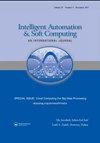Dynamic Feature Subset Selection for Occluded Face Recognition
IF 2
4区 计算机科学
Q2 Computer Science
引用次数: 1
Abstract
Accurate recognition of person identity is a critical task in civil society for various application and different needs. There are different well-established biometric modalities that can be used for recognition purposes such as face, voice, fingerprint, iris, etc. Recently, face images have been widely used for person recognition, since the human face is the most natural and user-friendly recognition method. However, in real-life applications, some factors may degrade the recognition performance, such as partial face occlusion, poses, illumination conditions, facial expressions, etc. In this paper, we propose two dynamic feature subset selection (DFSS) methods to achieve better recognition for occluded faces. The proposed DFSS methods are based on resilient algorithms attempting to minimize the negative influence of confusing and low-quality features extracted from occluded areas by either exclusion or weight reduction. Principal Component Analysis and Gabor filtering based approaches are initially used for face feature extraction, then the proposed DFSS methods are dynamically enforced. This is leading to more effective feature representation and an improved recognition performance. To validate their effectiveness, multiple experiments are conducted and the performance of different methods is compared. The experimental work is carried out using AR database and Extended Yale Face Database B. The obtained results of face identification and verification show that both proposed DFSS methods outperform the standard (static) use of the whole number of features and the equal feature weights.遮挡人脸识别的动态特征子集选择
准确识别人的身份是公民社会中各种应用和不同需求的关键任务。有不同的公认的生物识别模式,可用于识别目的,如面部,声音,指纹,虹膜等。近年来,人脸图像被广泛应用于人物识别,因为人脸是最自然、最友好的识别方法。然而,在现实应用中,一些因素可能会降低识别性能,如部分面部遮挡、姿势、照明条件、面部表情等。为了更好地识别被遮挡的人脸,本文提出了两种动态特征子集选择(DFSS)方法。所提出的DFSS方法基于弹性算法,试图通过排除或减重来最小化从遮挡区域提取的混淆和低质量特征的负面影响。首先采用基于主成分分析和Gabor滤波的方法进行人脸特征提取,然后动态执行DFSS方法。这将导致更有效的特征表示和改进的识别性能。为了验证其有效性,进行了多次实验,并比较了不同方法的性能。利用AR数据库和Extended Yale Face database b进行了实验,得到的人脸识别和验证结果表明,所提出的两种DFSS方法都优于使用整数特征和等特征权重的标准(静态)方法。
本文章由计算机程序翻译,如有差异,请以英文原文为准。
求助全文
约1分钟内获得全文
求助全文
来源期刊

Intelligent Automation and Soft Computing
工程技术-计算机:人工智能
CiteScore
3.50
自引率
10.00%
发文量
429
审稿时长
10.8 months
期刊介绍:
An International Journal seeks to provide a common forum for the dissemination of accurate results about the world of intelligent automation, artificial intelligence, computer science, control, intelligent data science, modeling and systems engineering. It is intended that the articles published in the journal will encompass both the short and the long term effects of soft computing and other related fields such as robotics, control, computer, vision, speech recognition, pattern recognition, data mining, big data, data analytics, machine intelligence, cyber security and deep learning. It further hopes it will address the existing and emerging relationships between automation, systems engineering, system of systems engineering and soft computing. The journal will publish original and survey papers on artificial intelligence, intelligent automation and computer engineering with an emphasis on current and potential applications of soft computing. It will have a broad interest in all engineering disciplines, computer science, and related technological fields such as medicine, biology operations research, technology management, agriculture and information technology.
 求助内容:
求助内容: 应助结果提醒方式:
应助结果提醒方式:


